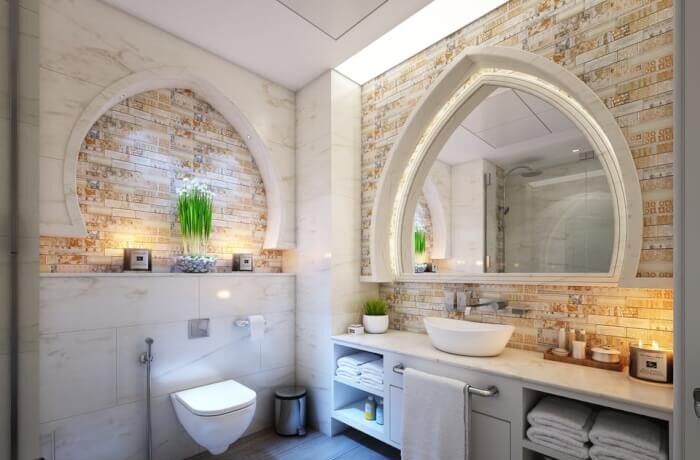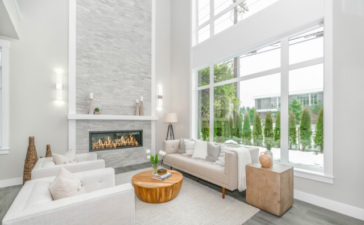Does the thought of remodeling your bathroom give you goosebumps and send your mind on a wild fantasy as you imagine all that’s possible? Well, enjoy the warm and fuzzy feelings while you can because the price tag of a bathroom remodeling will quickly jolt you back to reality.
One study found that the average bathroom remodel costs slightly more than $18,000. That cost primarily covers the replacement of flooring, fixtures and lighting. Fortunately, remodeling expenses aren’t cast in stone and there are ways you can save on spending. We look at a number of saving tips below.
1. Prioritize Progressive Improvements Over an Instant Overhaul
You don’t have to wait until you have access to a large lump sum before you can kick off a bathroom remodeling project. For many home owners, that financial windfall may never come. Instead, think of the remodeling as a journey and not an event. Breakdown the project into smaller tasks that you can address with minimal expenditure.
Replace missing, faulty or worn-out elements first and move to larger improvements as more money becomes available. Before you know it, your bathroom will look like new yet your wallet will have barely felt the pinch.
2. Keep Things in Their Current Position
Moving items is the main reason for the soaring costs of kitchen and bath remodeling. That’s because moving an item will often be more than just extracting it from its current position and placing it elsewhere. There’ll often be work to do above and below the surface at both the original location and the new position.
For instance, moving the shower, tub or toilet will require complex plumbing changes that will only drive up costs dramatically. Maintaining the basic layout of the bathroom will certainly save you cash.
3. Take Intelligent Short Cuts
Whereas the knowledge and experience of a contractor shouldn’t be underestimated or trivialized, some homeowners incur unnecessary costs on things they can do themselves. For example, do you really need the contractor to buy the materials for you? You’ll be paying for a service that is easy for you to do.
Take advantage of interior designers who have a design-only service option. That means they’ll design the bathroom for you but it’s up to you to purchase the required materials and supervise the contractor.
4. Go for Functional Affordable Alternatives
Who doesn’t love the finer things in life? After all, isn’t an ‘upgrade’ the whole point of bathroom remodeling? While this is true, that doesn’t mean you have to break the bank in the process. You don’t have to move from a $20 fixture to a $200 replacement.
In fact, neither your family nor the person who buys your home (if you do eventually sell) will necessarily be able to notice the difference between a $50 item and a $200 item. Consider choosing stock pieces over customized items. Perhaps vinyl plank flooring can achieve the same overall design goal as expensive tiles. In short, be flexible.
5. DIY
Do-it-yourself (DIY) can be a big scary term especially if the handiest task you’ve ever had to do is assemble a bookshelf from Ikea. Yet, DIY is much easier than many people imagine it to be. You don’t have to do the entire remodeling work yourself but there are simple tasks that you can handle with little difficulty.
Painting may be time-consuming work but it is fairly easy. Depending on the size of your bathroom, you can save as much as $1,000 by opting to paint it yourself. Similarly, dismantling old fixtures before handing over the project to the contractor can save you hundreds of dollars in labor and disposal fees.
Bathrooms are an intimate space where we go to pamper ourselves. A bathroom remodeling should therefore seek to make it a cleaner, safer, cozier, more comfortable and more inviting space. Since you can only spare a limited amount of money for it, you have to be smart and identify opportunities to save without compromising on final quality. It’s all about flexibility in your design goals and good up-front planning.






